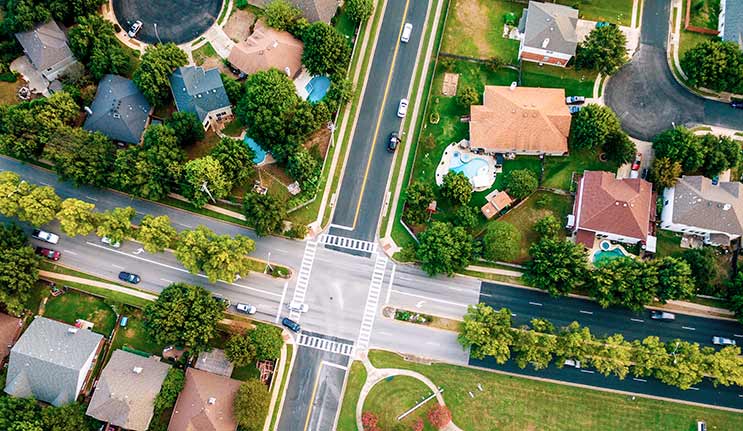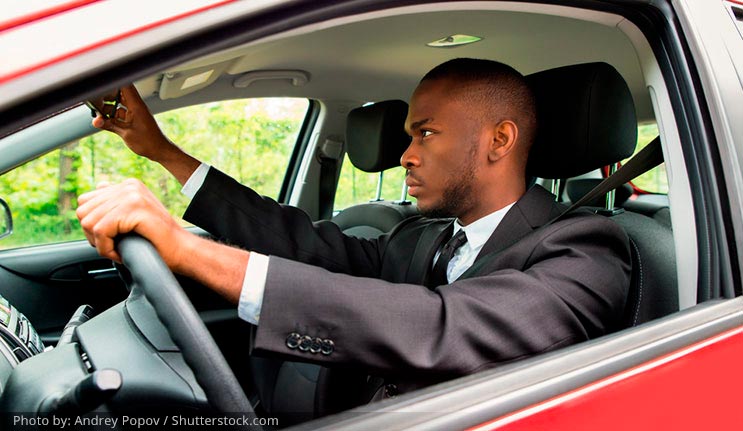The road can be a dangerous place. Well over one million people die in car crashes in the world every year, according to the World Health Organization. Motor vehicle accidents represent the tenth most common cause of death globally in 2015. On US roads, there are over 32,000 deaths and 2 million non-fatal accidents per year. This is bad enough, but last year saw a spike, taking the number of fatalities up to some 40,000 people, according to estimates from the National Safety Council (NSC).
But while the road has its dangers, it does not have to be this bad. We can start by reducing clearly risky behavior. The NSC published a survey earlier this year, where 64% of drivers said they were comfortable speeding, 47% felt okay texting either manually or through voice controls, 13% drove while impaired by marijuana, and 10% operated a motor vehicle when they felt they had had too much alcohol. This is not okay and most people know that.
If you do have an accident, wearing your seat belt can make all the difference. Seat belts reduce crash-related injuries and deaths by about half, according to the Centers for Disease Control and Prevention (CDC).
So, we can stay sober and focused, adhere to the speed limits and wear seat belts. What else? Defensive driving is one good answer. The NSC defines defensive driving as driving to save lives, time, and money, in spite of the conditions around you and the actions of others.
There are a lot of defensive driving courses on offer, both online and in classrooms. I took one recently and decided to put my knowledge to a test during a 370-mile move. Here’s what I learned.
Know your vehicle, route and rules
First things first: The vehicle. It is important to maintain your car. You don’t need to check the tire pressure and your windshield wipers every time you go around the block, but do make sure you look your vehicle over from time to time.
I packed my boxes into a small passenger car that I have used regularly, so I felt very comfortable when turning off the driveway. I know what it will do when I accelerate, turn and break. Knowing how your vehicle responds is important, so when I will do the same trip in a few months’ time, in a larger van that fits my furniture, I will have to take new factors into consideration.
I was heading to an unfamiliar area, so the evening before I made a route plan, deciding what main roads to take and looking for some suitable places for breaks. Before entering the urban area of my destination, I pulled over to set up the GPS for detailed directions.
I had the weather on my side that day. It was cloudy, but dry, and not particularly windy. Had it been rainy, or had I been doing the same trip in winter, I would have had to adapt my speed and distance to other vehicles accordingly–by slowing down and giving my fellow drivers more space. I had my sunglasses in handy for that late evening sun that sometimes almost blinds you.
Every driver needs to know the traffic laws. This being home, I felt comfortable with them, but remember if you are driving abroad or in a different state, they may differ from what you are used to. What are the local speed limits? Who has the right-of-way?
How to avoid a head-on collision?
The defensive driving course I took had freshened up my knowledge of how to prepare for dangerous situations and avoid head-on collisions.
First off, give yourself some 12-15 seconds to react. Driving in a rural area I would scan the road ahead, keeping an eye on the conditions of the road until the next curve or hill. In urban areas, it is good to look a block or two ahead. I checked my rear- and side-view mirrors every 3-5 seconds and kept an eye open for any slow-moving vehicles or cars passing others or changing lanes.
You may think of head-on collisions as something that happens on a rainy night, but I learned that more than half of those accidents occur in daylight and 80% of them in dry weather. The class linked a shocking 63% to distracted driving.
What do you do if the driver you are about to meet loses control of his or her vehicle? First, drive further to the right in your own lane. Reduce your speed in a controlled way. If the other driver regains vehicle control he or she is likely to turn back into the correct lane, so don’t try to go left. If the car remains in your lane, drive into the ditch and, if possible, aim for something soft, such as a shrub or a bush.
All senses on the road
The key to defensive driving is paying 100% attention. That means no distracted driving–so put away your phone, set up your GPS when you are parked, don’t snack and ask any rowdy passengers to quiet down–but it also means keeping a close eye on your surroundings and preparing for evasive action.
Most of my drive was in rural areas, often through forests, so I kept my eyes open for moose or deer that might come running out onto the road. When I entered urban areas, the questions I asked myself became different: Will the city bus in front of me make another stop soon? Where is that cyclist going? Where are the road construction workers?

Four-way intersections can be extremely dangerous if you’re not paying close attention to other vehicles and your surroundings. When in doubt, always yield the right of way. Photo by: Roschetzky Photography / Shutterstock.com
You should always give pedestrians the right-of-way and pay special attention to children, as they may make sudden and unpredictable moves. Never assume that you have the right of way. Even if the light is green, look left and right before entering an intersection.
Keep your cool…
The road can get crowded. The person in front of you may drive frustratingly slow. Someone stupidly cuts you off. We’ve all been there: Stressed and angry, you want to share your feelings. But no matter how tempting it may feel, road rage is hazardous. You may have been wronged, but it’s better to let it go.
Also consider how you affect other drivers. For example, only use the high-beams when there is no oncoming traffic or when the distance between you and the car in front of you is adequate. Signal your intentions to fellow drivers so they have time to prepare–don’t make sudden, risky movements.
Constantly switching lanes to zigzag yourself into pole position adds a lot more risk than the time it saves. If you want to pass the driver in front of you, wait until it is safe to do so. Check that there is no oncoming traffic, that you have enough visibility to overtake him or her, and that no one behind you has the same idea, and is starting to pass you. Signal your intention beforehand and complete the pass when you can see the car behind you in your rear-view mirror.
…and your distance
I hate being tailgated, so I try not to do it to others. When I consider my following distance, I think about the time I will need to react as well as the time it will take to actually stop the car.
My defensive driving class taught me that I need three seconds to stop my car in good conditions, a rule I’ve found repeatedly in many other sources. During my move, I would pick a bridge and count the seconds between when the car in front of me passed it and when I did. One one thousand, two one thousand, three one thousand.
In less than ideal conditions, you need to increase this to at least five seconds. If you are behind the wheel of a larger vehicle, you will need more time to stop–at least 4-6 seconds in normal conditions.
You may be driving on a fairly straight road in fine weather, but you don’t know what the driver in front of you is doing. He or she may be on the phone, half asleep or intoxicated and all of a sudden you are faced with an unexpected halt. And this is what it all boils down to, right? You may be doing everything right, but that still does not guarantee your safety. Practicing defensive driving will add extra protection to your drive. I made it to my destination safely and well on time.
About the Author
Eva Nyman grew up in Finland, but has lived in Belgium, France and Hungary. She holds a degree in journalism and communication from the University of Helsinki and has worked as a reporter for ten years. She feeds her fascination with history and current affairs with books and her love of nature with hikes. She’s passionate about traveling, particularly slow journeys, and her dream is to visit every corner of the world.
Protect your employees with these training courses on defensive driving:
Defensive Driving – Small Vehicles
Defensive Driving – Large Vehicles
Failure to Yield – Small Vehicles



